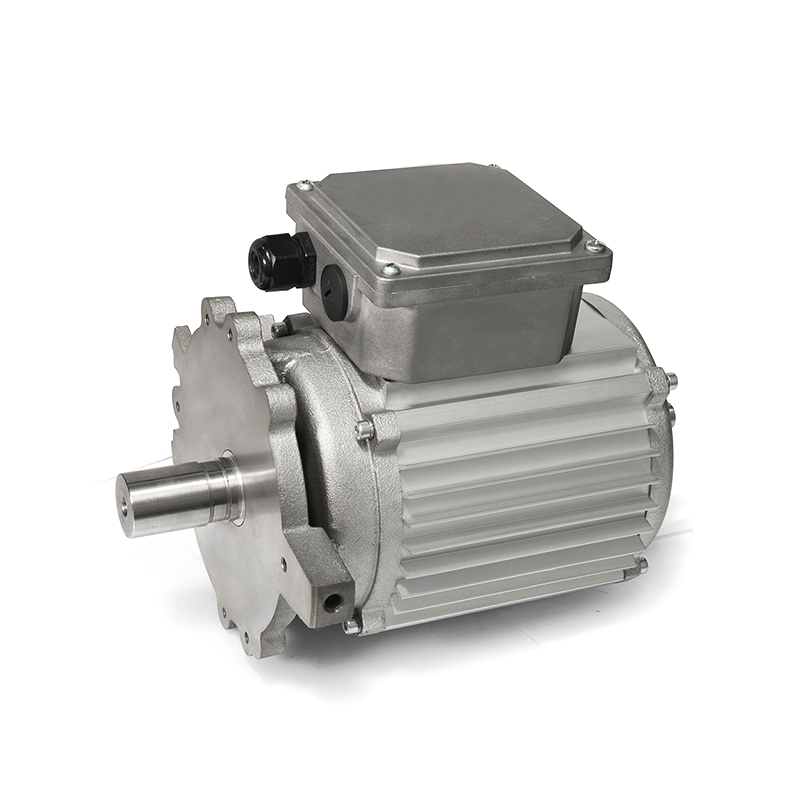Vacuum Pump Motor: Key to Efficient Vacuum Systems
A hengye vacuum pump motor plays a crucial role in the functioning of a vacuum pump, which is an essential component in many industrial, commercial, and scientific applications. Whether used for laboratory work, industrial processes, or HVAC systems, vacuum pumps rely on motors to create the necessary vacuum or low-pressure environment for various operations.
A vacuum pump motor works by converting electrical energy into mechanical energy, which is then used to drive the pump's components. The process begins when the motor is powered on and starts to rotate its shaft. The shaft, connected to the pump, drives the internal mechanism, which is responsible for moving air or other gases out of the pump's chamber.
There are several types of vacuum pumps, each with a unique method of generating suction, and the motor adapts to the specific mechanism of the pump. The most common types of vacuum pumps include:

A rotary vane pump uses a rotating rotor with sliding vanes to create a vacuum. The motor drives the rotor, causing the vanes to slide in and out of the rotor, trapping air and expelling it out of the pump's chamber.
In a diaphragm pump, the motor drives a diaphragm that flexes up and down, creating suction. The movement of the diaphragm draws air into the pump, which is then expelled after each stroke.
A piston pump uses a motor-driven piston that moves back and forth in a cylinder. This motion generates suction by creating a pressure differential, which draws air or gas out of the pump's chamber.
A scroll pump consists of two interleaving spiral-shaped scrolls. The motor drives one of the scrolls, trapping gas between the scrolls and compressing it until it is expelled.
The roots blower uses two counter-rotating lobes to move air. The motor powers the lobes, creating suction by forcing air through the pump chamber.
The motor's primary function is to provide the energy needed to rotate or move these components, which ultimately creates the vacuum.
Alternating current (AC) motors are commonly used in vacuum pump systems, particularly in larger, industrial applications. AC motors are reliable, cost-effective, and capable of providing consistent power. They are often used in systems where the pump requires continuous operation.
Direct current (DC) motors are used in smaller or more precise applications, such as laboratory pumps or portable vacuum systems. DC motors are highly efficient, offer better speed control, and provide smooth operation, but they may be more expensive and require more complex control systems.
Brushless motors are known for their energy efficiency, low maintenance, and long service life. These motors do not use brushes to transfer electrical current, which reduces friction, heat, and wear. Brushless motors are commonly used in high-end vacuum pumps where reliability and performance are paramount.
Universal motors are versatile and can run on both AC and DC power. These motors are often found in smaller vacuum pumps, such as those used in household appliances, because they are compact and cost-effective.
The vacuum pump motor is indispensable in many industries. Here are some of the primary applications:
Vacuum pumps are commonly used in laboratories for tasks such as filtering, drying, and degassing. Vacuum systems are also used in scientific instruments like electron microscopes, chromatography systems, and mass spectrometers. The vacuum pump motor ensures that these systems function accurately and efficiently.
In industrial manufacturing, vacuum pumps are used in processes like vacuum forming, degassing, and coating. The vacuum system helps remove air and moisture from molds or product surfaces, enhancing product quality and durability. Vacuum pumps are also used in packaging systems to remove air from packaging materials, extending shelf life.
In the food industry, vacuum pumps and motors are used for processes such as vacuum sealing, dehydration, and food preservation. Vacuum-sealed packaging helps preserve the freshness and nutritional value of food products by removing oxygen and moisture.
Vacuum pumps are used in the automotive industry for various applications, including brake systems, air conditioning, and emission control. The vacuum pump motor powers the systems that help maintain optimal performance and safety in vehicles.
In heating, ventilation, and air conditioning (HVAC) systems, vacuum pumps are used to remove air and moisture from refrigerant lines before they are charged with refrigerant. The motor in the vacuum pump ensures efficient evacuation of air, which is crucial for the proper functioning of the HVAC system.
Vacuum pump motors are also used in medical equipment, such as suction devices and dental equipment. These devices require a consistent and reliable vacuum to remove fluids, air, or debris from medical environments.
Factors to Consider When Choosing a Vacuum Pump Motor
Power Requirements: The power rating of the motor should match the demands of the vacuum pump. The size and capacity of the pump will determine whether you need a low-power motor for small-scale applications or a high-power motor for industrial systems.
An energy-efficient motor can reduce operational costs, particularly in large systems that run continuously. Brushless motors and high-efficiency AC motors are often preferred for their energy-saving capabilities.
Some applications require precise control over the motor speed to regulate the vacuum level. DC motors and variable-speed AC motors offer this flexibility, making them ideal for sensitive processes that need exact vacuum levels.
The size of the motor should fit the space constraints of the vacuum pump system. Smaller motors may be required for compact, portable pumps, while larger systems may require bulkier motors.
The motor's build quality and materials should be suited for the operating environment. Motors in high-use industrial applications should be robust and capable of withstanding harsh conditions, such as high temperatures or exposure to chemicals.
-
Feedback
Hotline:0086-15869193920
Time:0:00 - 24:00


 English
English Deutsch
Deutsch italiano
italiano 中文简体
中文简体












